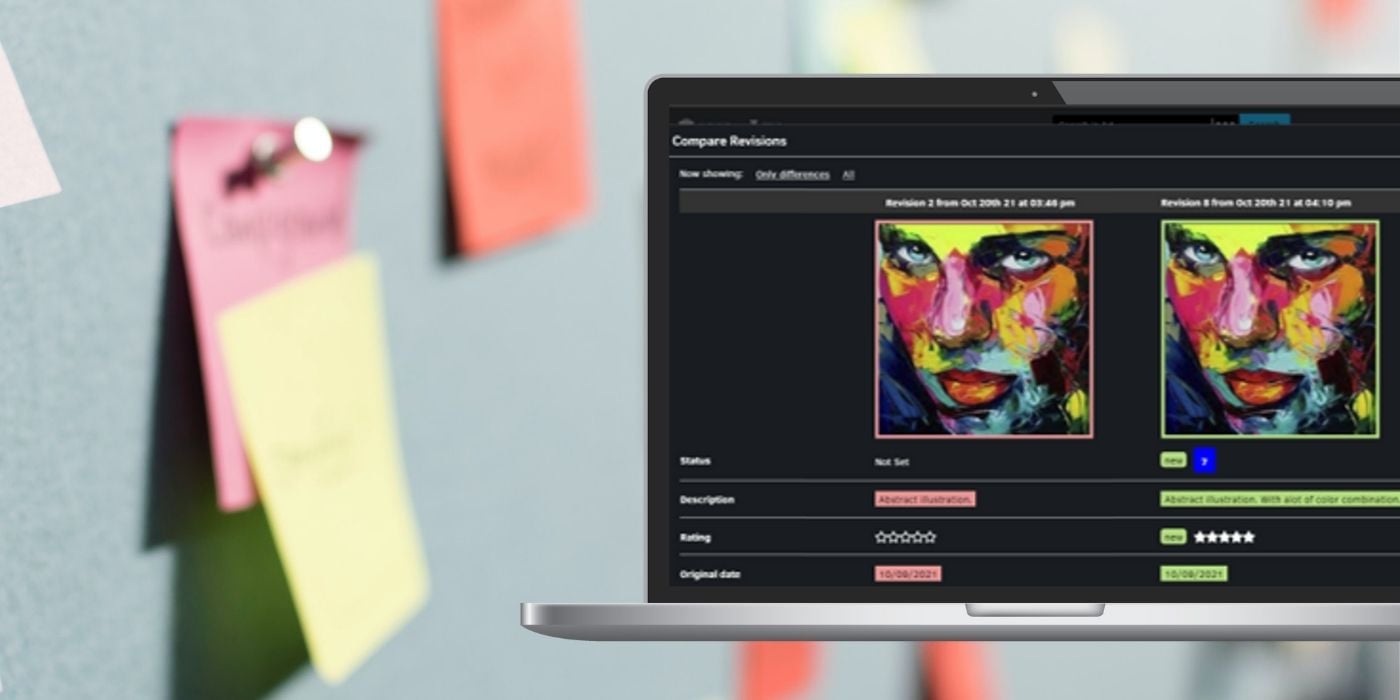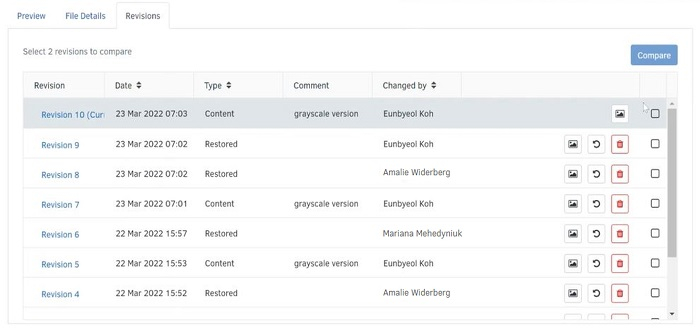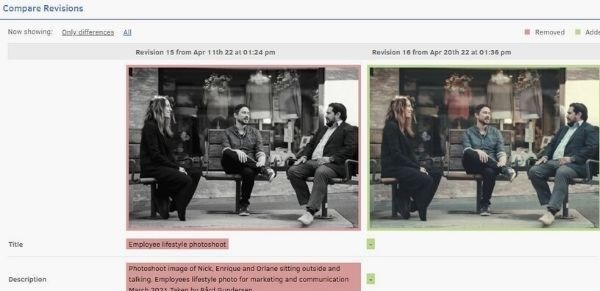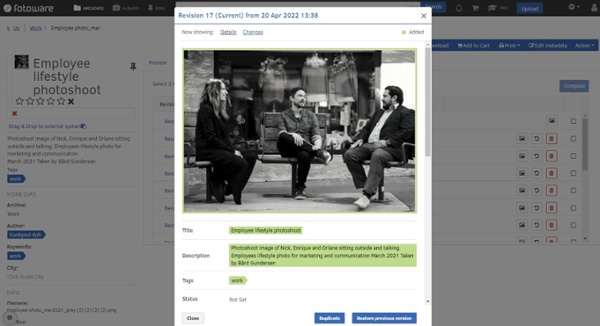
Version Control: What it is and why it matters to your team
We are very excited to announce the recent release of Version Control - one of the features that many users have been waiting for.
You may be familiar with the concept of Version Control if you are working with shared office documents, such as Word or Google Docs, or a Content Management System (CMS) platform.
Version Control makes it easy for teams to collaborate on a project by keeping tabs on every activity to an asset.
What is Version Control?
Version Control enables you to track and manage changes to your files over time. With this, you can keep any number of revisions of an asset when it is updated, making it possible to revisit and restore older versions..
Version Control provides you with a full overview of an asset through its lifecycle. The feature is especially beneficial when you work together with your team on the same project, ensuring everyone has access to the latest revision of the file.

What can you do with Version Control?
1. Update files and their metadata
You can easily create new versions of an asset by uploading a file or editing the metadata. Revisions are automatically saved both when changes are made to the assets themselves (such as when editing an image in Photoshop) and when changes are made to an asset's metadata. You can also manually update your asset through Upload.
2. Track all changes to assets
Having a record of changes allows you and your team to manage and monitor all changes made to a file. This makes the revisions traceable, giving you a better understanding of how a file is evolving over time.
3. Compare versions side-by-side
Version Control gives access to historical revisions of your files. You can also view and compare the different revisions side-by-side to track what has happened.
4. Restore a previous revision
If you make any mistakes or if you’d like to revisit an older revision, you can easily jump back to any former revision of a file at the click of a button.
So why does your team need Version Control?
One of the key benefits of Version Control is that it lets the team stay up-to-date with the latest version.
For example, if you shared an asset link with your colleagues and then made some additional edits to the asset, your colleagues will automatically see your latest revision when they use the asset link. This prevents colleagues from using an outdated asset. Imagine several people making changes to the same file simultaneously, it could lead to absolute chaos! You are safe from this with Version Control as all revisions will be stored in an organized manner.
By storing revisions associated with a file, instead of uploading multiple different versions, you can ensure everyone has access to the latest revision of an asset. As such, you can keep the repository tidy. In addition, having multiple backups in one place prevents you from losing critical information on an asset. Other benefits include saving on storage space and ensuring a single source of truth across the organization.
How to get started
Version Control is available for Professional, Team, and Business Plans in FotoWare SaaS. If you are using one of these plans, please contact the Support team or your Account Manager in order to get Version Control enabled.
The feature will be available to use On-Premises during the Summer. Our Professional Services Team can assist you in configuring Version Control in the best-optimized ways to meet your goals; don’t hesitate to reach out to our Professional Services team.
If your organization currently doesn’t have a FotoWare solution, feel free to book a meeting with one of our experts to see it live.
More information on how to use Version Control is available:
- Version Control in FotoWare
- What are Revisions and how do they work
- Comparing two revisions of an asset
- Restoring an Asset Revision
Want to learn more?
Talk to one of our experts to discover how we can streamline your organization's content workflows.